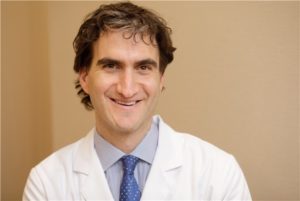Cancer and Fertility: Preserving Your Options
NEW YORK (PRWEB) November 15, 2018
The National Cancer Institute estimates that 1.7 million new cases of cancer will be diagnosed in 2018. While advancing age is the primary risk factor for cancer and we typically associate the disease with old age, about 9 percent of cancers are diagnosed in people under the age of 45. And with aggressive treatment and advanced therapies, increasing numbers of these patients survive their disease and face the consequences of treatment, including the possibility of infertility, sterility, and early menopause.
“A cancer diagnosis is devastating at any age,” says fertility specialist Dr. Daniel Kort. “While the primary focus of medical care is and should be curing the disease, medical planning for life after cancer is also critical. Today, there is a greater emphasis on fertility preservation, so patients can still build their families after cancer treatment.”
The effect of cancer and cancer treatment on reproductive function depends on many factors: the type of cancer and its location, the dosage and duration of treatment, and the patient’s age and overall health. In general, surgery may compromise or remove reproductive organs and radiation and chemotherapy may damage the testes in men and the ovaries in women.
“It’s impossible to predict how each patient will react,” says Dr. Kort, “or whether the effects – for men and women – will be temporary or permanent. That’s why it’s important to consider taking steps to preserve reproductive function before treatment begins.”
In addition to strategies to limit the total amount of radiation or chemotherapy exposure to the testes and ovaries, freezing sperm, eggs, and embryos provides the best possibility for future family building.”
Preserving fertility in men
The most common preservation option for men is to collect and freeze semen before beginning treatment (semen cryopreservation). The sperm can later be thawed and used to fertilize a partner’s egg. This technique became widely known after cyclist Lance Armstrong banked sperm before cancer treatment and later fathered three children. For men who cannot produce a semen sample that contains mature sperm, other options include extracting sperm from the testicles (Testicular Sperm Extraction, TESE), and a still largely experimental procedure to freeze testicular tissue that can later be transplanted or grafted back into the testes to produce sperm.
Preserving fertility in women
Historically, embryo cryopreservation was the recommended procedure for women to preserve fertility prior to cancer treatment. In this procedure, women take medications to produce multiple eggs which are then retrieved and frozen for later use. Sperm (from a partner or a sperm donor) is then used to fertilize the collected eggs in the lab via in vitro fertilization (IVF). The embryos created are then frozen for future use.
For women without a partner, freezing eggs before fertilization (egg freezing or oocyte cryopreservation) can be used to preserve fertility WITH the option to use a future partner. While initial efforts were less successful, new advances in freezing techniques have improved success rates dramatically. In fact, some studies have shown egg freezing to be as successful as embryo freezing.
“Prior to embarking on cancer treatment, it is essential that patients speak to their doctors about fertility preservation,” Dr. Kort says. He suggests tips for patients to guide their discussions with their doctors:
- Will my treatment affect my future fertility or ability to carry a pregnancy?
- Are there equally effective treatments that might reduce or eliminate those effects?
- After treatment is it likely that fertility will return? How long might it take?
- Which options for preserving fertility are appropriate for me? What are the success rates for those options?
- What are the risks of delaying cancer treatment when undergoing procedures for fertility preservation?
“Among the physical, emotional, and practical challenges for young people who are dealing with a cancer diagnosis, preserving fertility has come to the fore as a vital component of a treatment plan,” says Dr. Kort. “Fortunately, we can now provide integrated clinical resources that bridge cancer treatment with fertility treatment to help each person overcome the disease and keep their fertility whenever possible.”
Bio: Daniel Kort, MD, FACOG, is double board-certified in Obstetrics and Gynecology and Reproductive Endocrinology and Infertility. He currently is Practice Director and Associate Medical Director at Neway Fertility in New York City. http://www.newayfertility.com

